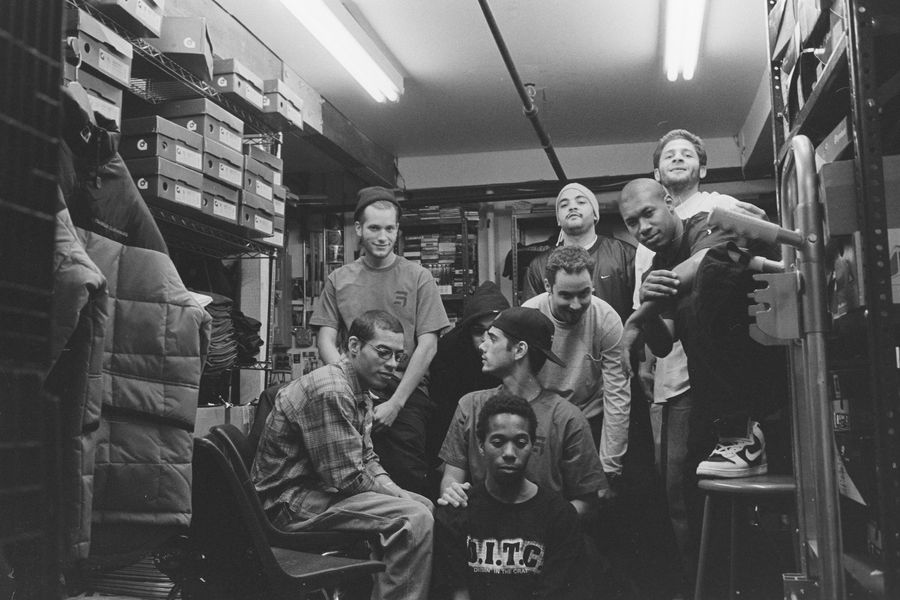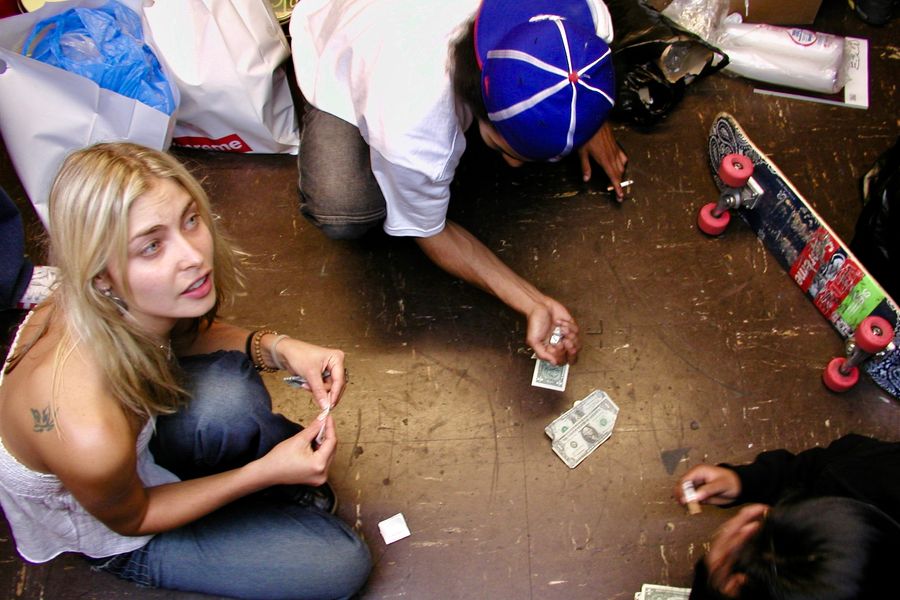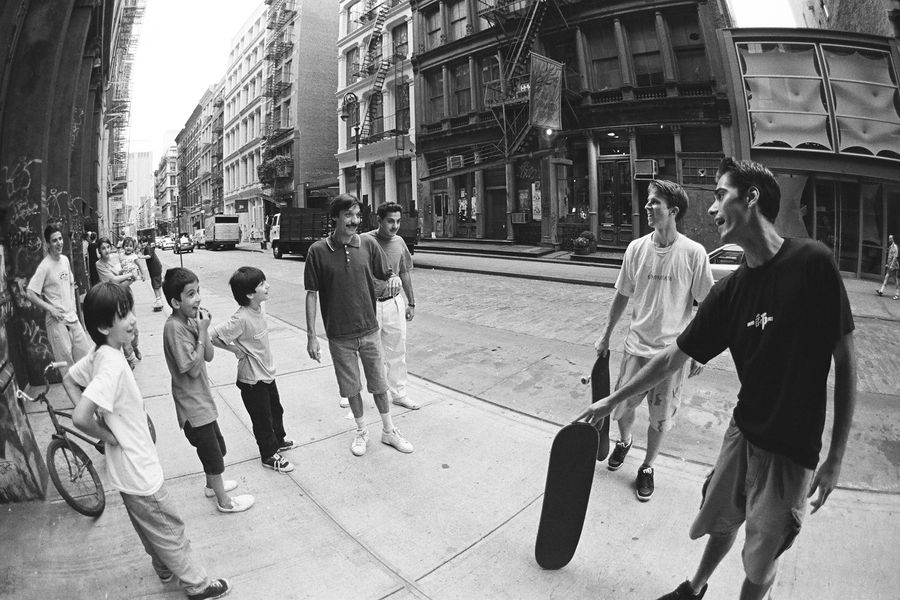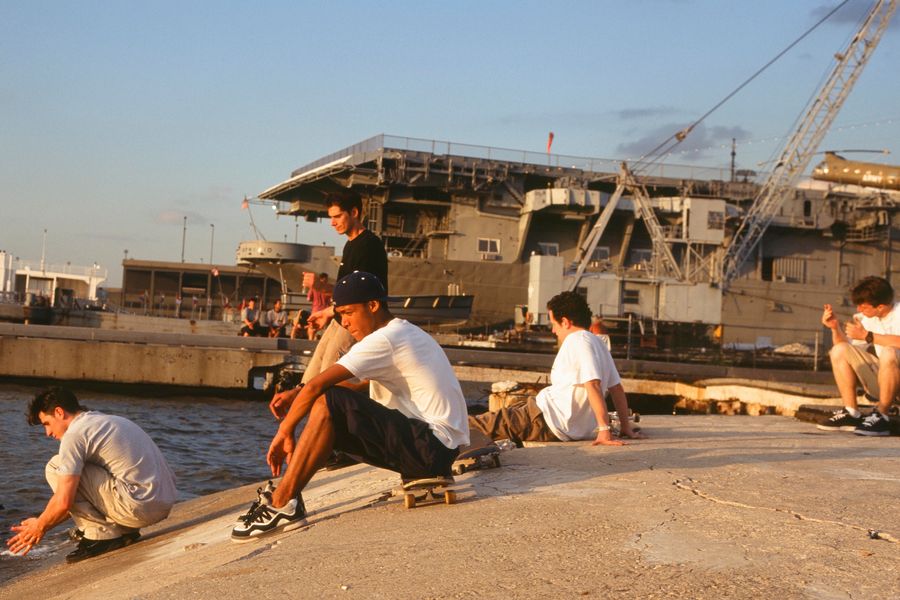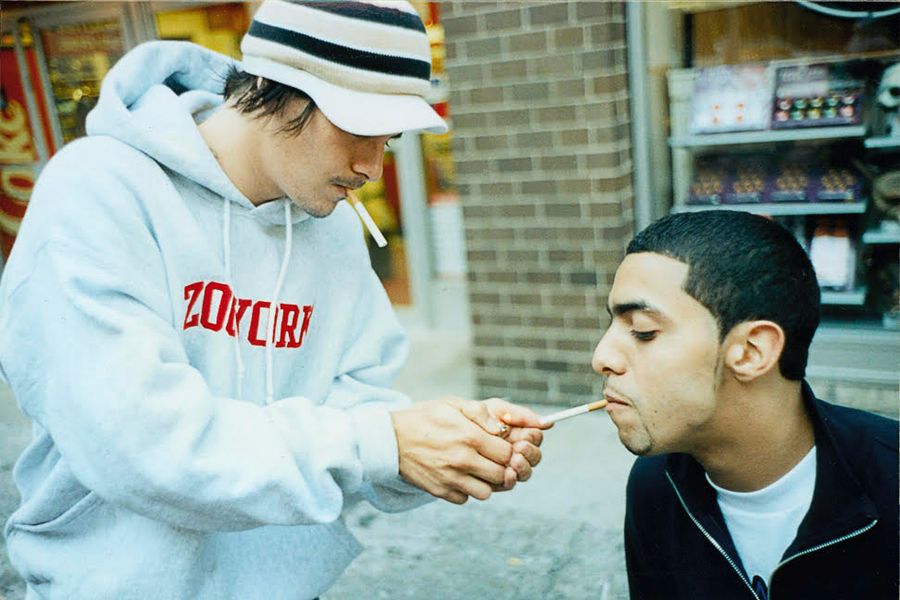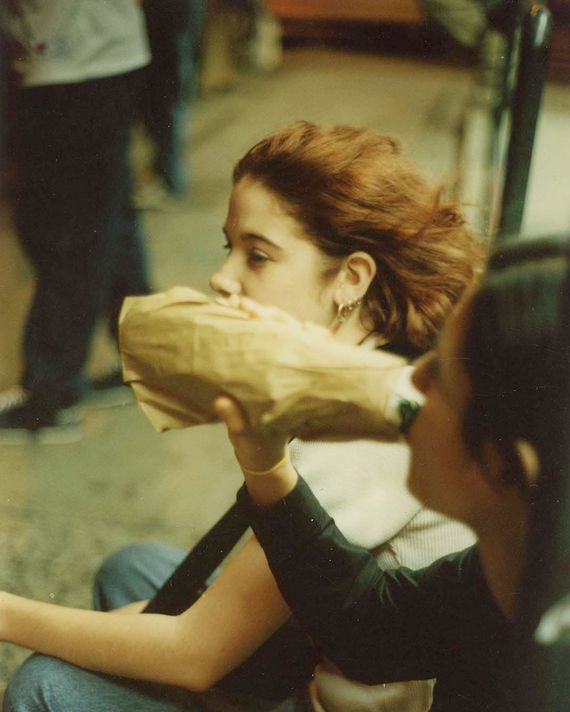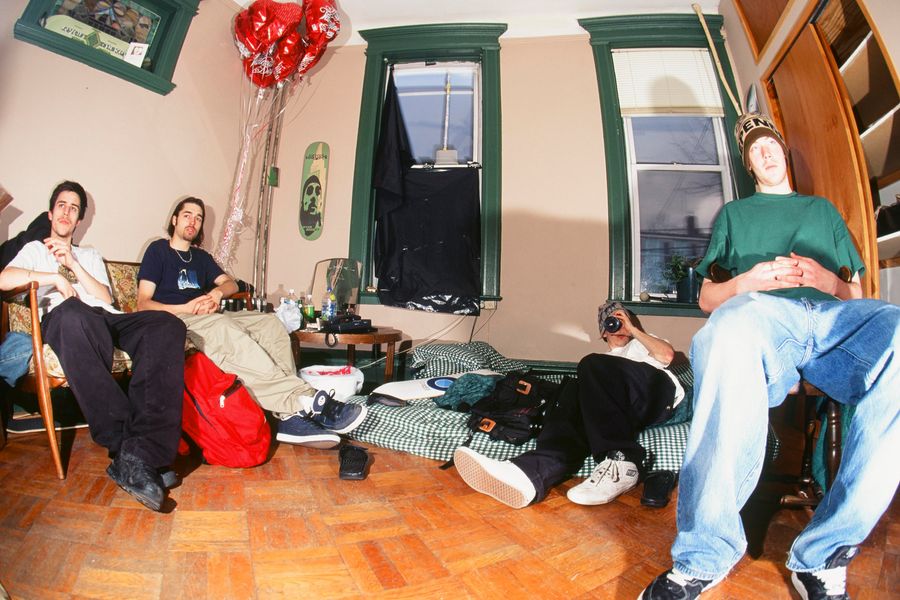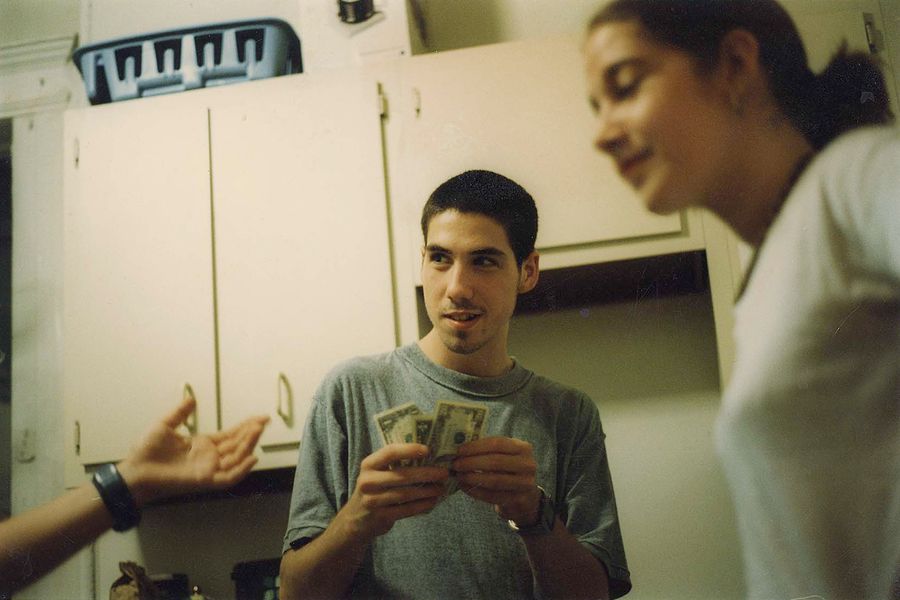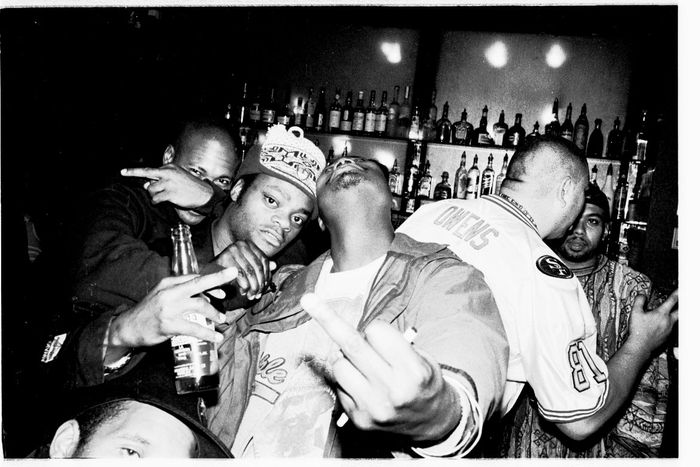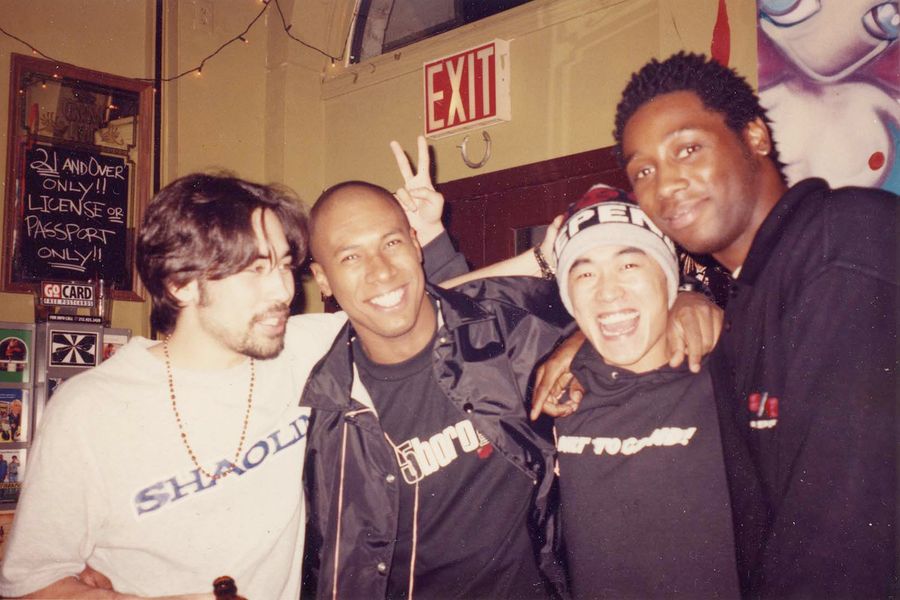Empire Skate, a documentary about New York skateboarding culture in the 1990s and the rise of Supreme, will premiere at the Tribeca Film Festival on June 12. One of the skaters in the film, Alex Corporan, recalls the early days of the store, before the brand became a global phenomenon.
People would come by my house in Washington Heights early, my mom would feed us, and then we were off: Go to Bennett Park, sesh a bit. Take the train to the Brooklyn Banks and meet everyone. Skate to the Seaport. Eat at Burger King, terrorize the security guard — one cup of soda with 20 skaters sharing it. Next it was Astor Place. Then midtown. We had to wait until a certain hour with the security guards there — they had Rottweilers to chase us out of the plazas.
The whole city was a playground. People couldn’t fathom us. Who is this Chinese guy? This Dominican guy? This white Irish guy? Back then, the skater was California — a white guy with blond hair, blue eyes, and a vert ramp. And here we were, these dirty rats, skating around the city, destroying everything.
Then we had our house, which was Supreme. No one knew who worked at the store — everyone just hung out in the back, playing cee-lo, drinking 40s. The shop was empty for so long. Then it was like, Something is going on. The lines started. Buyers were showing up looking for the “box” logo. Soccer moms being like, “Yeah, skateboarding!”
We stayed protective of each other. We were each other’s family. It was still us and that’s it — no one could break the bubble even as things got bigger. Like, You can be here, but you are not down.
Pooky, Giovanni Estevez, Ryan Hickey, Aron, and Akira Mowatt at the original Supreme store on Lafayette Street before starting their shift. The photos and the film are a “love letter to belonging,” says Kate Ferraguto, a producer on Empire Skate who curated the archive used in the film.
Photo: Alex Corporan
Gizmo, Aron, Pooky, Neil Santos, Ivan Perez, Alex Corporan, Jake Walls, Peter Bici, and Hamilton Harris in the back of the Supreme store in the 1990s. “The shop was our place to play — in and out, all day,” says Alex Corporan.
Photo: Gary Vandegriek
Model Lisa Seiffert, Akira Mowatt, and Jamie Reyes Seiffert playing cee-lo. “On every film, I look closely at the relationship between the photographer and subject,” says Ferraguto. In these photos, she says, “you can see the comfort level, the ease. This is a pretty exclusive group.”
Photo: Alex Corporan
Kids waiting for Peter Bici and Keith Hufangel to ollie over them. “People couldn’t fathom us,” says Corporan. “Back then, the skateboarder was California — a white guy with blond hair, blue eyes, and a vert ramp. And here we were, these dirty rats, skating around the city, destroying everything.”
Photo: Sammy Glucksman
Alex Corporan watching the sunset by the Intrepid. “This time period can’t be re-created,” says Ferraguto. “We didn’t have phones to find each other. You had to meet up at the spot.”
Photo: Sammy Glucksman
Justin Pierce (who appeared in Kids) and Steven Cales having a smoke break at the Burger King by the Seaport.
Photo: Gary Vandegriek
Nikki Bowman and Sara drinking 40s and watching their friends skate. “The girls” were core members of the group, says Corporan.
Photo: Jennifer O’Donnell
“The Brooklyn House” in Sunset Park. This brownstone belonged to Ryan Hickey and was home to many professional skaters throughout the ’90s and early aughts. “We had so many hubs,” says Corporan.
Photo: Sammy Glucksman
Leo Fitzpatrick, who appeared in Kids, at Jen O’Donnell’s house.
Photo: Jennifer O’Donnell
Alex Corporan and legendary skater Harold Hunter at Spoon Bar. “Every single person we have photos and film from is incredibly important,” says Ferraguto. “I wish I could include them all.”
Photo: Gary Vandegriek
Sean Kelling, Alex Corporan, Spencer Fujimoto, and Nesto Sutton at Spoon Bar, the skaters’ regular hangout spot.
Photo: Jennifer O’Donnell
Empire Skate premieres at the Tribeca Film Festival on June 12.



